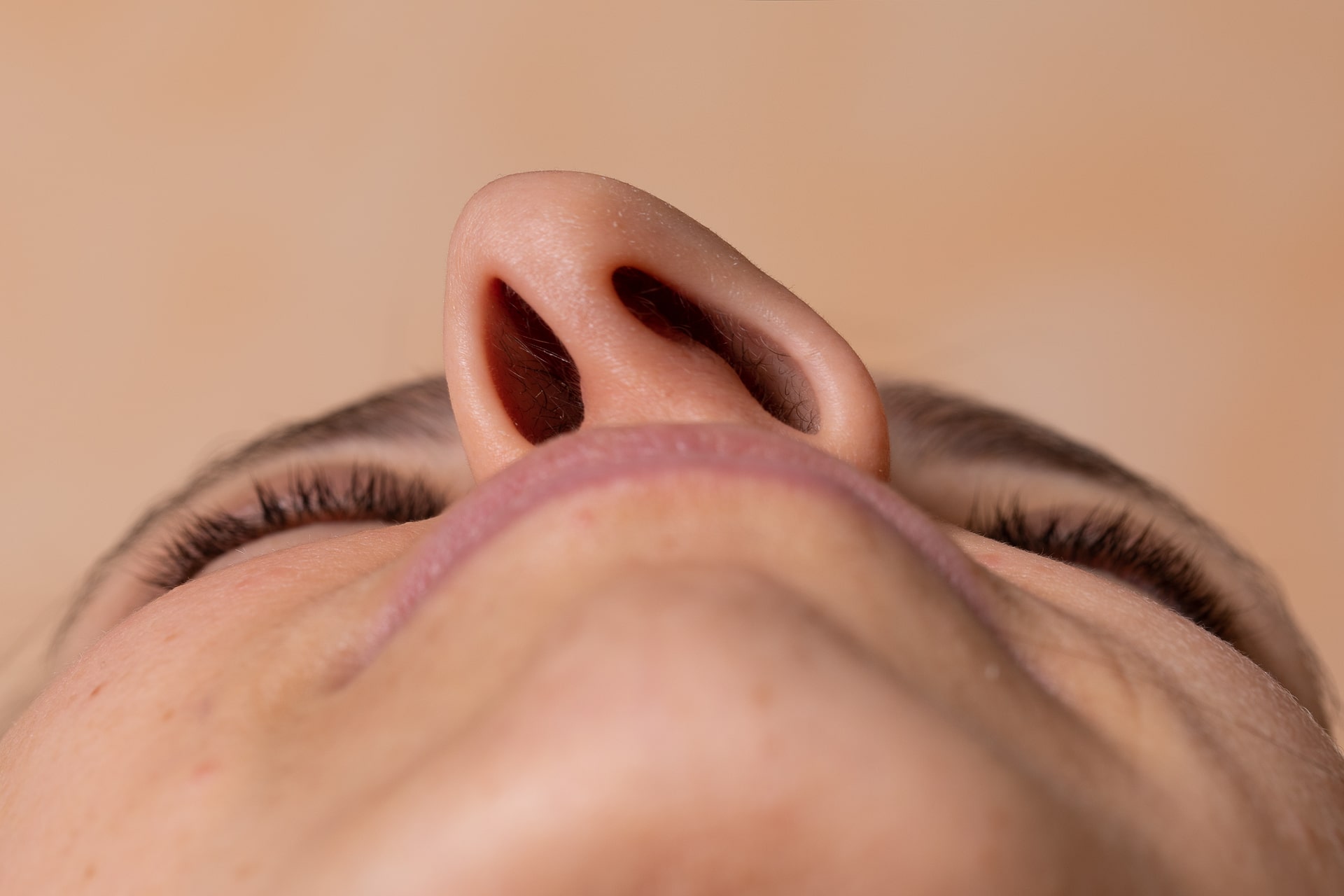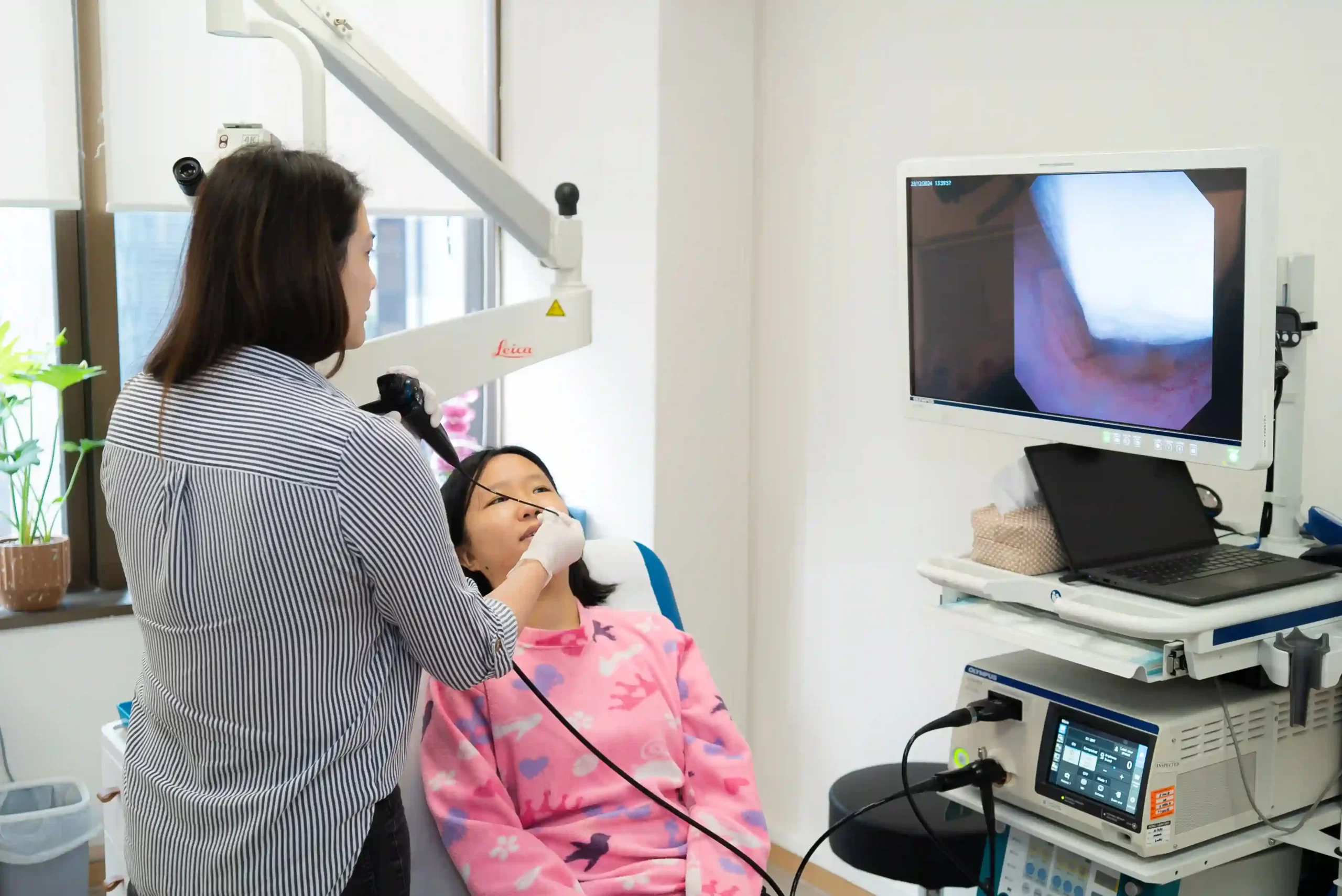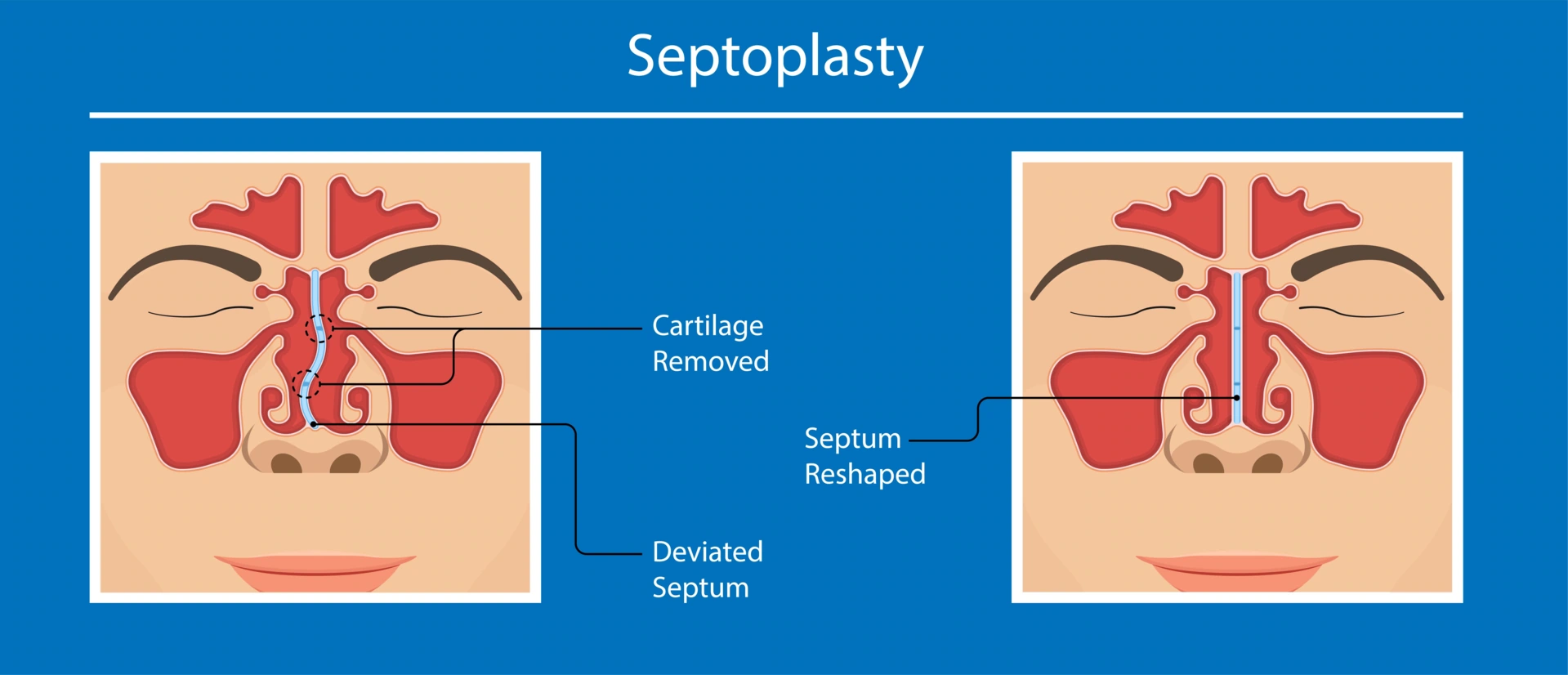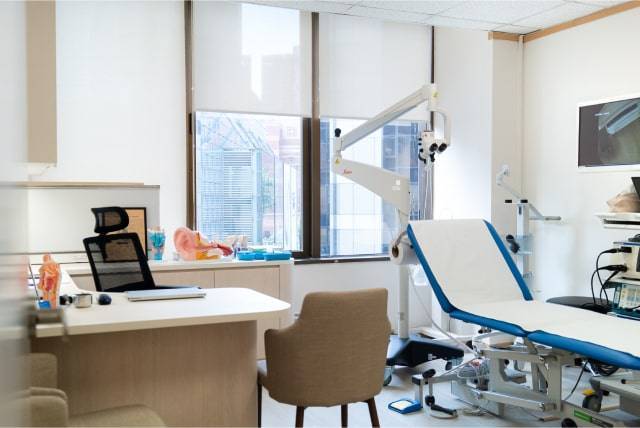Deviated Nasal Septum

A deviated nasal septum is characterised by the thin wall between the nasal passages being displaced to one side, which can significantly affect breathing and overall nasal function. While some individuals may not experience any symptoms, others might find this condition to be a source of considerable discomfort and health issues. Understanding, diagnosing, and effectively treating a deviated septum is crucial for maintaining good respiratory health and quality of life.

The nasal septum is a critical structure composed of bone and cartilage, which divides the nasal cavity into two nostrils. Ideally, it sits at the centre, allowing for even airflow through both nostrils. However, when it’s deviated, it leans to one side, potentially obstructing airflow and causing various symptoms.
Causes of Deviated Nasal Septum
A deviated septum can be present since birth (congenital) or result from injury to the nose. Some risk factors include genetic predisposition and trauma, such as a blow to the face, which is common in contact sports or accidents.
This condition is prevalent, with many individuals having some degree of deviation. However, not all cases are symptomatic or require treatment, making accurate prevalence rates challenging to ascertain.
Common Symptoms of Deviated Nasal Septum
The most noticeable symptom of a deviated septum is having difficulty breathing through the nose, which is often more pronounced on one side. Other symptoms include recurrent sinus infections, nosebleeds, facial pain, headaches, and snoring.
What happens if a Deviated Nasal Septum is Untreated?
If left untreated, a severe case of deviated septum can lead to chronic sinusitis, sleep disturbances including snoring and sleep apnea, and a significant impact on life quality due to constant nasal obstruction and discomfort.
How does an ENT Specialist in Singapore Diagnose Deviated Nasal Septum?
Diagnosing a deviated septum involves a thorough medical history and a physical examination. Our experienced ear, nose and throat (ENT) specialist, Dr Ker Liang will inspect the nasal passages, often using a bright light and sometimes a nasal speculum, as well as perform a naso-endoscopy, to open up the nostrils for a detailed view.
In addition to a physical examination, diagnostic tools such as nasal endoscopy and imaging studies (e.g. CT scans) can produce detailed images of the nasal anatomy to confirm the diagnosis and plan treatment.

What are the Treatment Options Available?
At Aglow ENT Centre, we provide expert treatment for a deviated septum as our experienced ENT specialist is well-versed in both non-surgical and surgical treatments.
Non-Surgical Treatments
Mild cases of a deviated septum may be managed with medications to reduce symptoms such as nasal congestion and inflammation. These include decongestants, antihistamines, and nasal corticosteroid sprays.
Surgical Intervention (Septoplasty)

For more severe cases, a surgical procedure known as septoplasty may be recommended. This surgery can straighten the nasal septum, thereby improving airflow through the nose. Recovery from septoplasty is generally quick, with most patients resuming normal activities within a week.
Recent advances in treatment methods, such as less invasive surgical techniques and post-operative care protocols, have improved outcomes and reduced recovery times for patients undergoing septoplasty.
Preventive Measures and Management
Managing symptoms and minimising the impact of a deviated septum includes using a humidifier to keep the nasal passages moist, avoiding nasal irritants, and practising good nasal hygiene. Regular check-ups with an ENT specialist are paramount to helping you manage your nasal septum condition.
Conclusion
A deviated nasal septum can range from being a minor inconvenience to a significant impediment to daily life. Understanding the symptoms, seeking timely diagnosis, and exploring appropriate treatment options, including both non-surgical and surgical methods, can significantly alleviate discomfort and improve nasal function.
If you suspect you have a deviated septum, schedule an appointment with our experienced ENT surgeon from Aglow ENT Centre to manage your condition.
When should you see an ENT specialist in Singapore?
Please consult an ENT specialist if you are suffering from any ear, nose, or throat symptoms. It is also advisable to visit an ENT doctor if you experience persistent mouth breathing due to a chronic blocked nose or encounter snoring issues.
Dr Ker Liang sees adults and children for general ENT conditions and provides comprehensive management in a broad range of Ear, Nose, and Throat, as well as Head and Neck conditions. She has a special interest in treating throat and voice conditions, including persistent sore throat, voice issues, snoring, and Obstructive Sleep Apnoea (OSA).
Medical Teaching
Assistant Professor Ker Liang has a passion for teaching and is an Assistant Professor with NUS Yong Loo Lin School of Medicine (YLLSOM). As the NUS-NUH Otolaryngology Department Undergraduate Medical Director, Dr Ker Liang supervises the training of medical students from YLLSOM, NUS. She is actively involved
in the training of postgraduate junior doctors and residents in the Head and Neck Surgery department. She was conferred with an Undergraduate Teaching Award by the National University Health System in 2016 for her outstanding efforts as an Otolaryngology educator.
Medical Teaching
Assistant Professor Ker Liang has a passion for teaching and is an Assistant Professor with NUS Yong Loo Lin School of Medicine (YLLSOM). As the NUS-NUH Otolaryngology Department Undergraduate Medical Director, Dr Ker Liang supervises the training of medical students from YLLSOM, NUS. She is actively involved
in the training of postgraduate junior doctors and residents in the Head and Neck Surgery department. She was conferred with an Undergraduate Teaching Award by the National University Health System in 2016 for her outstanding efforts as an Otolaryngology educator.
Lorem ipsum dolor sit amet, consectetur adipiscing
Lorem ipsum dolor sit amet, consectetur adipiscing elit. Ut elit tellus, luctus nec ullamcorper mattis, pulvinar dapibus leo. Lorem ipsum dolor sit amet, consectetur adipiscing elit. Ut elit tellus, luctus nec ullamcorper mattis, pulvinar dapibus leo.
Lorem ipsum dolor sit amet, consectetur adipiscing
Lorem ipsum dolor sit amet, consectetur adipiscing elit. Ut elit tellus, luctus nec ullamcorper mattis, pulvinar dapibus leo. Lorem ipsum dolor sit amet, consectetur adipiscing elit. Ut elit tellus, luctus nec ullamcorper mattis, pulvinar dapibus leo.
Lorem ipsum dolor sit amet, consectetur adipiscing
Lorem ipsum dolor sit amet, consectetur adipiscing elit. Ut elit tellus, luctus nec ullamcorper mattis, pulvinar dapibus leo. Lorem ipsum dolor sit amet, consectetur adipiscing elit. Ut elit tellus, luctus nec ullamcorper mattis, pulvinar dapibus leo.
Lorem ipsum dolor sit amet, consectetur adipiscing
Lorem ipsum dolor sit amet, consectetur adipiscing elit. Ut elit tellus, luctus nec ullamcorper mattis, pulvinar dapibus leo. Lorem ipsum dolor sit amet, consectetur adipiscing elit. Ut elit tellus, luctus nec ullamcorper mattis, pulvinar dapibus leo.
Lorem ipsum dolor sit amet, consectetur adipiscing
Lorem ipsum dolor sit amet, consectetur adipiscing elit. Ut elit tellus, luctus nec ullamcorper mattis, pulvinar dapibus leo. Lorem ipsum dolor sit amet, consectetur adipiscing elit. Ut elit tellus, luctus nec ullamcorper mattis, pulvinar dapibus leo.



